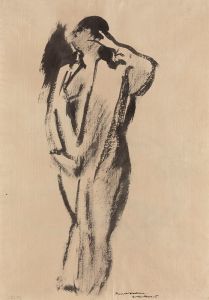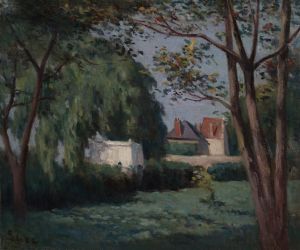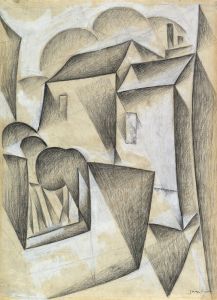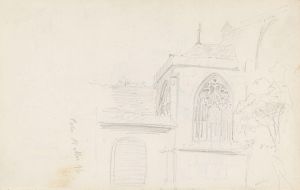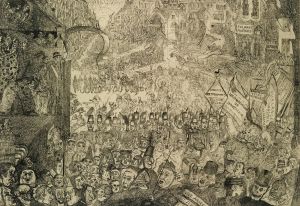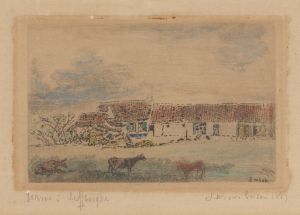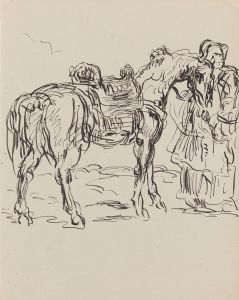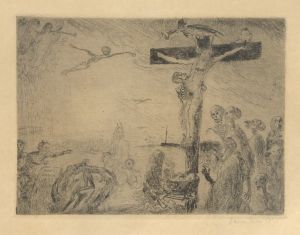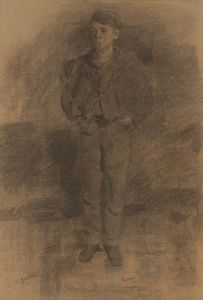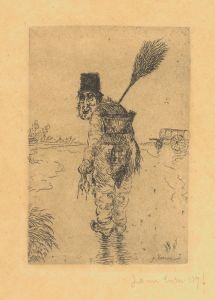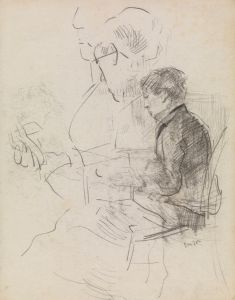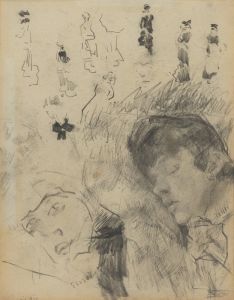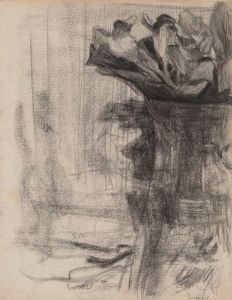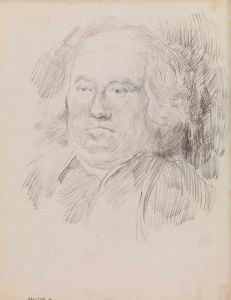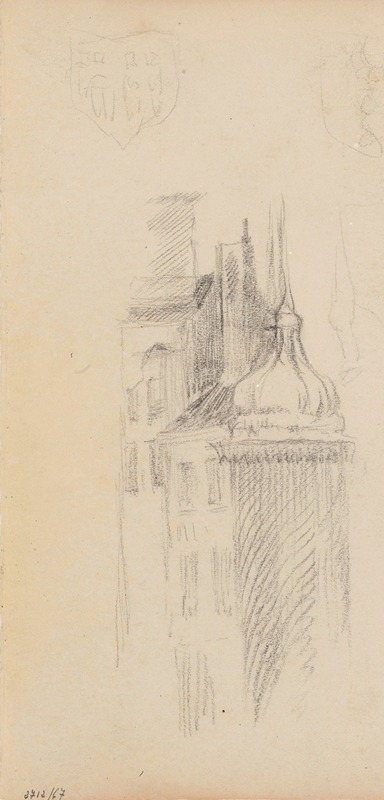
Houses and Pear Shaped Turret
A hand-painted replica of James Ensor’s masterpiece Houses and Pear Shaped Turret, meticulously crafted by professional artists to capture the true essence of the original. Each piece is created with museum-quality canvas and rare mineral pigments, carefully painted by experienced artists with delicate brushstrokes and rich, layered colors to perfectly recreate the texture of the original artwork. Unlike machine-printed reproductions, this hand-painted version brings the painting to life, infused with the artist’s emotions and skill in every stroke. Whether for personal collection or home decoration, it instantly elevates the artistic atmosphere of any space.
James Ensor, a prominent Belgian painter and printmaker, is known for his unique and often surreal style that blends elements of symbolism and expressionism. One of his lesser-known works, "Houses and Pear Shaped Turret," exemplifies his distinctive approach to art, characterized by vivid colors, intricate details, and a penchant for the bizarre.
James Ensor was born in 1860 in Ostend, Belgium, and spent most of his life in this coastal city. His upbringing in a family that owned a curiosity shop filled with exotic items and carnival masks greatly influenced his artistic vision. Ensor's work often reflects a fascination with the grotesque and the fantastical, themes that are evident in many of his paintings.
"Houses and Pear Shaped Turret" is a painting that captures Ensor's interest in architecture and his ability to transform ordinary scenes into something extraordinary. The painting depicts a cluster of houses, dominated by a turret that is notably pear-shaped, a feature that gives the work its name. Ensor's use of color is particularly striking in this piece, with bold and contrasting hues that bring the scene to life. The painting's composition is both whimsical and structured, showcasing Ensor's skill in balancing chaos with order.
The architectural elements in "Houses and Pear Shaped Turret" reflect Ensor's fascination with the built environment and his ability to imbue it with a sense of mystery and intrigue. The pear-shaped turret, in particular, stands out as a surreal element, challenging the viewer's perception of reality. This blending of the real and the fantastical is a hallmark of Ensor's work, inviting viewers to look beyond the surface and explore the deeper meanings within his art.
Ensor's career was marked by a departure from traditional artistic norms, and he often faced criticism from the art establishment of his time. However, his innovative approach eventually gained recognition, and he became a leading figure in the Belgian avant-garde movement. His work has been influential in the development of modern art, inspiring future generations of artists to explore new and unconventional forms of expression.
While "Houses and Pear Shaped Turret" may not be as widely recognized as some of Ensor's other works, it remains an important example of his artistic vision and his ability to transform the mundane into the extraordinary. The painting reflects Ensor's unique perspective on the world, one that is both playful and profound, and continues to captivate audiences with its vibrant colors and imaginative composition.
James Ensor's legacy as an artist is firmly established, and his contributions to the world of art are celebrated in museums and galleries around the world. "Houses and Pear Shaped Turret" is a testament to his creativity and his enduring influence on the art world, offering a glimpse into the mind of an artist who dared to defy convention and explore the boundaries of imagination.





